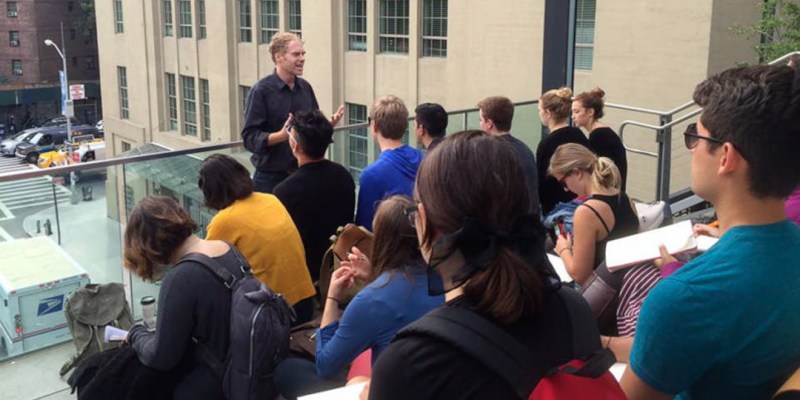This year, Stanford In New York (SiNY) will offer a spring quarter program, becoming a year-round opportunity for the first time.
Since its launch in 2015, SiNY has provided students with the chance to pursue internships in addition to taking classes. The upcoming spring program is themed “The Global City,” an opportunity for students to explore the impact of globalism on New York City, according to Rosina Miller, the program’s director.
“The idea of the global city is one important to New York because the city contains global arts and architecture, the office of almost every major company and is home to the United Nations and many immigrant communities,” Miller said. “Students will have the ability to engage with many diverse people living in close quarters with each other.”
Each quarter in the program offers a different selection of classes to suit diverse interests. In the fall, the dominant subjects are arts, architecture, design and urban studies. Previously, students have interned at theater companies, architecture firms, city government, nonprofits and laboratories. In the winter, students can expect a focus on media and finance, with the opportunity to pursue internships at banks, finance companies and publishing and media companies. Notable winter internships have included WNYC Public Radio and VH1 television network.
“Stanford in New York is an opportunity to use experiential education to connect academic and educational interests,” Miller said. “It offers students the opportunity to personally grow at an off-campus site in a vibrant city with vast fields and industries different than those presented in the areas surrounding Silicon Valley.”
Yuliya Mykhaylovska, manager of SiNY’s internship program, said that the academic curriculum is tailored to student interests, which range from international relations to public policy to earth systems.
Courses planned for the upcoming quarter include “Biology, Technology, and Society: The City as a Human Life Support,” “The UN in Action,” “Leadership Communication: Across the Globe and Around the Corner” and “Grappling with the Global: Gentrification, Immigration and Sustainability in New York City.” More information about these courses and the program itself can be found on the Stanford in New York program’s website.
Potential internships for spring quarter include the United Nations, the World Health Organization, immigrant rights advocacy group Make the Road New York, global entrepreneurship group Endeavor, British-American venture fund Octopus Ventures and the International Rescue Committee.
Past participants say these internships have been a cornerstone of the SiNY program.
“For me, deciding to do Stanford in New York besides maybe other travel programs was that I knew that Stanford in New York was more internship-driven,” said Michela Rodriguez ’18.
During her time in the program, Rodriguez interned at New Georges, a theater company — an experience that taught her both about theater and about herself, she said.
“You learn what type of environment you excel in, where you feel most comfortable and what you feel challenged by in a healthy way,” Rodriguez said.
Julio Chavez ’18, a previous participant who now works as a student ambassador for SiNY, also said he had a formative internship experience.
“For me, personally, I’ve never had the experience or opportunity to have a full 10- or 12-week internship, so I knew that if I was able to get into the program and experience that, that’d be beneficial for me, my work and my resume too,” Chavez said.
During his time in New York, Chavez interned at the 52nd Street Project, an arts education organization based in Hell’s Kitchen that offers playwriting, storytelling and songwriting lessons to local youths. He said that SiNY managed the balance between students’ work and class schedules well.
“I had enough time to balance my internship with whatever I had to do for my classes,” Chavez said. “And thankfully the workload for the classes [was] not overwhelming. The professors or instructors were typically very understanding of busy schedules from students.”
Applications for the program’s spring quarter closed on Sunday.
“We look for demonstrated interest in the fields applied for or offered that quarter, whether that be through previous experience or stated desire,” Miller said. “In addition to that, applicants should be reflective and have a motivation to learn more about themselves, the program and the areas of focus for that quarter.”
Contact Ryan Tran at rtran ‘at’ stanford.edu.
